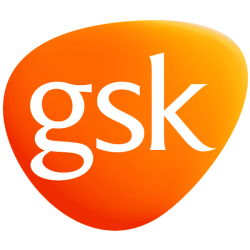BAYRY

Bayer Aktiengesellschaft
BAYRY
(2.5)5,05 USD
-1.98% ROA
-2.61% ROE
-5.7x PER
28.855.055.098,36 USD
130.52% DER
0.29% Yield
-1.88% NPM
Bayer Aktiengesellschaft Stock Analysis
Bayer Aktiengesellschaft Fundamental Analysis
Fundamental analysis in stock investing is like studying the foundation of a house before buying it. It involves looking at a company's financial health, like its earnings, assets, and debts, to determine if it's a good investment based on its fundamental strength and potential for growth.
| # | Analysis | Rating |
|---|---|---|
| 1 |
PBV
The stock's low PBV ratio (0.99x) suggests it's undervalued, making it an attractive opportunity for investors. |
|
| 2 |
Dividend
The company's consistent dividend distribution over the past five years reflects its dedication to providing shareholders with steady returns, making it an appealing choice for investors seeking income stability. |
|
| 3 |
ROE
The stock's ROE falls within an average range (8.27%), demonstrating satisfactory profitability and efficiency in utilizing shareholders' equity. |
|
| 4 |
ROA
The stock's ROA (5.34%) indicates that it's doing well in making money from the things it owns. This makes it a good option to invest and make consistent profits. |
|
| 5 |
Revenue Growth
Company's revenue has experienced consistent growth over the last three years, indicating a favorable financial trajectory and making it an attractive investment choice. |
|
| 6 |
Net Profit Growth
This company's net profit has consistently grown over the past three years, showcasing a positive financial trend and making it an appealing investment opportunity. |
|
| 7 |
Assets Growth
With a track record of continuous revenue growth in the last three years, this company offers a promising investment opportunity |
|
| 8 |
Graham Number
The Graham number analysis indicates that this company's stock price is likely undervalued, raising prospects for a favorable investment opportunity. |
|
| 9 |
DER
The company has a high debt to equity ratio (116%), which means it owes a lot of money compared to what it actually owns, making it financially risky. |
|
| 10 |
Dividend Growth
The company's dividend growth has remained flat for the past three years, offering no indication of improved returns and making it a less advantageous investment opportunity. |
|
| 11 |
Buffet Intrinsic Value
The company's stock presents a potential concern as it appears overvalued (-8) by Warren Buffett's formula, indicating that its market price exceeds its estimated intrinsic value. |
Bayer Aktiengesellschaft Technical Analysis
Technical analysis in stock investing is like reading the patterns on a weather map to predict future weather conditions. It involves studying past stock price movements and trading volumes to make predictions about where a stock's price might go next, without necessarily looking at the company's financial health.
| # | Analysis | Recommendation |
|---|---|---|
| 1 | Awesome Oscillator | Buy |
| 2 | MACD | Sell |
| 3 | RSI | Sell |
| 4 | Stoch RSI | Buy |
Bayer Aktiengesellschaft Price Chart
Financial Statements
Financial statements are like report cards for companies. They show how much money a company makes (income statement), what it owns and owes (balance sheet), and where it spends its money (cash flow statement), helping stock investors understand if a company is healthy and worth investing in.
Income Statements
An income statement for a company is like a scoreboard for its profits and losses. It shows how much money the company made (revenue) and how much it spent to make that money (expenses), helping stock investors see if a company is making a profit or not.
Revenue in stock investing is the total amount of money a company earns from its sales, and it's a key factor that investors consider to assess a company's financial performance and growth potential.
| Year | Revenue | Growth |
|---|---|---|
| 1998 | 28.062.000.000 | |
| 1999 | 27.320.000.000 | -2.72% |
| 2000 | 29.561.441.360 | 7.58% |
| 2001 | 28.987.886.720 | -1.98% |
| 2002 | 28.984.582.550 | -0.01% |
| 2003 | 28.517.587.450 | -1.64% |
| 2004 | 29.735.880.800 | 4.1% |
| 2005 | 27.362.398.480 | -8.67% |
| 2006 | 28.955.881.040 | 5.5% |
| 2007 | 32.385.000.000 | 10.59% |
| 2008 | 32.918.000.000 | 1.62% |
| 2009 | 31.168.000.000 | -5.61% |
| 2010 | 35.088.000.000 | 11.17% |
| 2011 | 36.528.000.000 | 3.94% |
| 2012 | 39.760.000.000 | 8.13% |
| 2013 | 40.157.000.000 | 0.99% |
| 2014 | 42.239.000.000 | 4.93% |
| 2015 | 46.324.000.000 | 8.82% |
| 2016 | 46.769.000.000 | 0.95% |
| 2017 | 35.015.000.000 | -33.57% |
| 2018 | 39.586.000.000 | 11.55% |
| 2019 | 43.545.000.000 | 9.09% |
| 2020 | 41.400.000.000 | -5.18% |
| 2021 | 44.081.000.000 | 6.08% |
| 2022 | 50.739.000.000 | 13.12% |
| 2023 | 41.368.000.000 | -22.65% |
| 2023 | 47.637.000.000 | 13.16% |
| 2024 | 44.576.000.000 | -6.87% |
Research and Development Expenses are the costs a company incurs to create and improve its products or services, which can be important for investors to evaluate a company's innovation and potential for future growth.
| Year | Research and Development Expenses | Growth |
|---|---|---|
| 1998 | 1.811.000.000 | |
| 1999 | 2.141.000.000 | 15.41% |
| 2000 | 2.379.693.900 | 10.03% |
| 2001 | 2.492.832.380 | 4.54% |
| 2002 | 2.533.947.230 | 1.62% |
| 2003 | 2.409.881.050 | -5.15% |
| 2004 | 2.105.338.720 | -14.47% |
| 2005 | 1.884.499.920 | -11.72% |
| 2006 | 2.297.316.080 | 17.97% |
| 2007 | 2.578.000.000 | 10.89% |
| 2008 | 2.653.000.000 | 2.83% |
| 2009 | 2.746.000.000 | 3.39% |
| 2010 | 3.053.000.000 | 10.06% |
| 2011 | 2.932.000.000 | -4.13% |
| 2012 | 3.013.000.000 | 2.69% |
| 2013 | 3.190.000.000 | 5.55% |
| 2014 | 3.574.000.000 | 10.74% |
| 2015 | 4.281.000.000 | 16.51% |
| 2016 | 4.666.000.000 | 8.25% |
| 2017 | 4.504.000.000 | -3.6% |
| 2018 | 5.246.000.000 | 14.14% |
| 2019 | 5.342.000.000 | 1.8% |
| 2020 | 7.126.000.000 | 25.04% |
| 2021 | 5.412.000.000 | -31.67% |
| 2022 | 6.572.000.000 | 17.65% |
| 2023 | 6.008.000.000 | -9.39% |
| 2023 | 5.630.000.000 | -6.71% |
| 2024 | 5.996.000.000 | 6.1% |
General and Administrative Expenses are the costs a company incurs to run its day-to-day operations, such as office rent, salaries, and utilities, which investors consider to understand a company's overall efficiency and management effectiveness.
| Year | General and Administrative Expenses | Growth |
|---|---|---|
| 1998 | 760.000.000 | |
| 1999 | 773.000.000 | 1.68% |
| 2000 | 7.778.990.440 | 90.06% |
| 2001 | 9.162.114.320 | 15.1% |
| 2002 | 8.021.148.490 | -14.22% |
| 2003 | 8.159.452.280 | 1.7% |
| 2004 | 7.862.931.120 | -3.77% |
| 2005 | 7.151.305.700 | -9.95% |
| 2006 | 8.133.044.460 | 12.07% |
| 2007 | 1.772.000.000 | -358.98% |
| 2008 | 1.649.000.000 | -7.46% |
| 2009 | 1.623.000.000 | -1.6% |
| 2010 | 1.647.000.000 | 1.46% |
| 2011 | 1.713.000.000 | 3.85% |
| 2012 | 1.866.000.000 | 8.2% |
| 2013 | 1.883.000.000 | 0.9% |
| 2014 | 1.741.000.000 | -8.16% |
| 2015 | 2.098.000.000 | 17.02% |
| 2016 | 2.256.000.000 | 7% |
| 2017 | 2.026.000.000 | -11.35% |
| 2018 | 2.728.000.000 | 25.73% |
| 2019 | 3.890.000.000 | 29.87% |
| 2020 | 2.879.000.000 | -35.12% |
| 2021 | 2.962.000.000 | 2.8% |
| 2022 | 2.838.000.000 | -4.37% |
| 2023 | 2.204.000.000 | -28.77% |
| 2023 | 2.453.000.000 | 10.15% |
| 2024 | 2.752.000.000 | 10.86% |
EBITDA stands for Earnings Before Interest, Taxes, Depreciation, and Amortization. It is a measure that helps stock investors analyze a company's profitability by looking at its earnings without considering certain expenses. This helps to get a clearer picture of the company's financial performance and its ability to generate cash flow.
| Year | EBITDA | Growth |
|---|---|---|
| 1998 | 9.139.000.000 | |
| 1999 | 6.595.000.000 | -38.57% |
| 2000 | 5.286.434.100 | -24.75% |
| 2001 | 4.133.740.980 | -27.88% |
| 2002 | 4.891.595.010 | 15.49% |
| 2003 | 3.526.287.230 | -38.72% |
| 2004 | 3.383.738.160 | -4.21% |
| 2005 | 4.643.705.000 | 27.13% |
| 2006 | 4.674.947.300 | 0.67% |
| 2007 | 5.866.000.000 | 20.3% |
| 2008 | 6.266.000.000 | 6.38% |
| 2009 | 5.815.000.000 | -7.76% |
| 2010 | 6.286.000.000 | 7.49% |
| 2011 | 7.194.000.000 | 12.62% |
| 2012 | 8.420.000.000 | 14.56% |
| 2013 | 8.002.000.000 | -5.22% |
| 2014 | 8.641.000.000 | 7.39% |
| 2015 | 9.607.000.000 | 10.06% |
| 2016 | 7.820.000.000 | -22.85% |
| 2017 | 7.759.000.000 | -0.79% |
| 2018 | 6.258.000.000 | -23.99% |
| 2019 | 8.766.000.000 | 28.61% |
| 2020 | -11.480.000.000 | 176.36% |
| 2021 | 6.968.000.000 | 264.75% |
| 2022 | 10.443.000.000 | 33.28% |
| 2023 | 5.752.000.000 | -81.55% |
| 2023 | 10.446.000.000 | 44.94% |
| 2024 | 8.288.000.000 | -26.04% |
Gross profit is the money a company makes from selling its products or services after subtracting the cost of producing or providing them, and it is an important measure for investors to understand a company's profitability.
| Year | Gross Profit | Growth |
|---|---|---|
| 1998 | 15.552.000.000 | |
| 1999 | 13.735.000.000 | -13.23% |
| 2000 | 13.952.352.960 | 1.56% |
| 2001 | 12.416.957.680 | -12.37% |
| 2002 | 11.459.464.250 | -8.36% |
| 2003 | 11.712.736.530 | 2.16% |
| 2004 | 12.366.467.520 | 5.29% |
| 2005 | 12.346.345.130 | -0.16% |
| 2006 | 13.680.850.640 | 9.75% |
| 2007 | 16.033.000.000 | 14.67% |
| 2008 | 16.462.000.000 | 2.61% |
| 2009 | 16.033.000.000 | -2.68% |
| 2010 | 17.985.000.000 | 10.85% |
| 2011 | 18.553.000.000 | 3.06% |
| 2012 | 20.701.000.000 | 10.38% |
| 2013 | 20.810.000.000 | 0.52% |
| 2014 | 21.973.000.000 | 5.29% |
| 2015 | 25.166.000.000 | 12.69% |
| 2016 | 26.474.000.000 | 4.94% |
| 2017 | 23.633.000.000 | -12.02% |
| 2018 | 22.576.000.000 | -4.68% |
| 2019 | 26.078.000.000 | 13.43% |
| 2020 | 22.262.000.000 | -17.14% |
| 2021 | 27.265.000.000 | 18.35% |
| 2022 | 30.868.000.000 | 11.67% |
| 2023 | 22.120.000.000 | -39.55% |
| 2023 | 27.888.000.000 | 20.68% |
| 2024 | 24.600.000.000 | -13.37% |
Net income in stock investing is like the money a company actually gets to keep as profit after paying all its bills, and it's an important measure to understand how well a company is doing financially.
| Year | Net Profit | Growth |
|---|---|---|
| 1998 | 1.614.000.000 | |
| 1999 | 2.002.000.000 | 19.38% |
| 2000 | 1.665.253.360 | -20.22% |
| 2001 | 966.562.600 | -72.29% |
| 2002 | 1.060.655.610 | 8.87% |
| 2003 | -1.258.537.550 | 184.28% |
| 2004 | 602.684.560 | 308.82% |
| 2005 | 1.594.057.280 | 62.19% |
| 2006 | 1.694.952.530 | 5.95% |
| 2007 | 4.711.000.000 | 64.02% |
| 2008 | 1.719.000.000 | -174.05% |
| 2009 | 1.359.000.000 | -26.49% |
| 2010 | 1.301.000.000 | -4.46% |
| 2011 | 2.470.000.000 | 47.33% |
| 2012 | 2.446.000.000 | -0.98% |
| 2013 | 3.189.000.000 | 23.3% |
| 2014 | 3.426.000.000 | 6.92% |
| 2015 | 4.110.000.000 | 16.64% |
| 2016 | 4.531.000.000 | 9.29% |
| 2017 | 7.336.000.000 | 38.24% |
| 2018 | 1.695.000.000 | -332.8% |
| 2019 | 2.430.000.000 | 30.25% |
| 2020 | -15.561.000.000 | 115.62% |
| 2021 | 1.000.000.000 | 1656.1% |
| 2022 | 4.150.000.000 | 75.9% |
| 2023 | -18.276.000.000 | 122.71% |
| 2023 | -2.941.000.000 | -521.42% |
| 2024 | -136.000.000 | -2062.5% |
EPS, or earnings per share, is a measure that shows how much profit a company has earned for each outstanding share of its stock, and it is important for stock investors as it helps understand the profitability of a company and compare it with other companies in the market.
| Year | Earning per Share (EPS) | Growth |
|---|---|---|
| 1998 | 2 | |
| 1999 | 3 | 0% |
| 2000 | 2 | 0% |
| 2001 | 1 | -100% |
| 2002 | 1 | 0% |
| 2003 | -2 | 200% |
| 2004 | 2 | 200% |
| 2005 | 2 | 0% |
| 2006 | 2 | 50% |
| 2007 | 6 | 66.67% |
| 2008 | 2 | -200% |
| 2009 | 2 | -100% |
| 2010 | 2 | 0% |
| 2011 | 3 | 50% |
| 2012 | 3 | 0% |
| 2013 | 4 | 33.33% |
| 2014 | 4 | 25% |
| 2015 | 5 | 0% |
| 2016 | 5 | 20% |
| 2017 | 8 | 37.5% |
| 2018 | 2 | -700% |
| 2019 | 2 | 50% |
| 2020 | -16 | 113.33% |
| 2021 | 1 | 1600% |
| 2022 | 4 | 75% |
| 2023 | -5 | 200% |
| 2023 | -3 | -100% |
| 2024 | 0 | 0% |
Cashflow Statements
Cashflow statements show the movement of money in and out of a company, helping stock investors understand how much money a company makes and spends. By examining cashflow statements, investors can assess if a company is generating enough cash to pay its bills, invest in growth, and provide returns to stockholders.
Free cash flow is the leftover cash that a company generates after covering its operating expenses and capital expenditures, which is important for stock investors as it shows how much money a company has available to invest in growth, pay dividends, or reduce debt.
| Year | Free Cashflow | Growth |
|---|---|---|
| 1998 | 145.000.000 | |
| 1999 | 621.000.000 | 76.65% |
| 2000 | 445.061.320 | -39.53% |
| 2001 | 1.244.168.370 | 64.23% |
| 2002 | 2.182.301.300 | 42.99% |
| 2003 | 1.637.289.860 | -33.29% |
| 2004 | 1.197.992.320 | -36.67% |
| 2005 | 2.111.619.310 | 43.27% |
| 2006 | 2.326.865.990 | 9.25% |
| 2007 | 2.423.000.000 | 3.97% |
| 2008 | 1.849.000.000 | -31.04% |
| 2009 | 3.800.000.000 | 51.34% |
| 2010 | 4.259.000.000 | 10.78% |
| 2011 | 3.445.000.000 | -23.63% |
| 2012 | 2.603.000.000 | -32.35% |
| 2013 | 3.014.000.000 | 13.64% |
| 2014 | 3.439.000.000 | 12.36% |
| 2015 | 4.373.000.000 | 21.36% |
| 2016 | 6.511.000.000 | 32.84% |
| 2017 | 5.768.000.000 | -12.88% |
| 2018 | 5.324.000.000 | -8.34% |
| 2019 | 5.557.000.000 | 4.19% |
| 2020 | 2.485.000.000 | -123.62% |
| 2021 | 2.478.000.000 | -0.28% |
| 2022 | 4.144.000.000 | 40.2% |
| 2023 | 1.311.000.000 | -216.09% |
| 2023 | 1.893.000.000 | 30.74% |
| 2024 | 1.273.000.000 | -48.7% |
Operating cash flow represents the cash generated or consumed by a company's day-to-day operations, excluding external investing or financing activities, and is crucial for stock investors as it shows how much cash a company is generating from its core business operations.
| Year | Operating Cashflow | Growth |
|---|---|---|
| 1998 | 2.848.000.000 | |
| 1999 | 3.253.000.000 | 12.45% |
| 2000 | 3.099.458.140 | -4.95% |
| 2001 | 3.866.250.400 | 19.83% |
| 2002 | 4.423.686.740 | 12.6% |
| 2003 | 3.287.284.200 | -34.57% |
| 2004 | 2.448.359.920 | -34.26% |
| 2005 | 3.499.664.950 | 30.04% |
| 2006 | 4.202.906.430 | 16.73% |
| 2007 | 4.283.000.000 | 1.87% |
| 2008 | 3.608.000.000 | -18.71% |
| 2009 | 5.375.000.000 | 32.87% |
| 2010 | 5.773.000.000 | 6.89% |
| 2011 | 5.060.000.000 | -14.09% |
| 2012 | 4.532.000.000 | -11.65% |
| 2013 | 5.171.000.000 | 12.36% |
| 2014 | 5.810.000.000 | 11% |
| 2015 | 6.890.000.000 | 15.67% |
| 2016 | 9.089.000.000 | 24.19% |
| 2017 | 8.134.000.000 | -11.74% |
| 2018 | 7.917.000.000 | -2.74% |
| 2019 | 8.207.000.000 | 3.53% |
| 2020 | 4.903.000.000 | -67.39% |
| 2021 | 5.089.000.000 | 3.65% |
| 2022 | 7.093.000.000 | 28.25% |
| 2023 | 4.062.000.000 | -74.62% |
| 2023 | 2.576.000.000 | -57.69% |
| 2024 | 1.901.000.000 | -35.51% |
Capex, short for capital expenditures, refers to the money a company spends on acquiring or upgrading tangible assets like buildings, equipment, or technology, which is important for stock investors as it indicates how much a company is investing in its infrastructure to support future growth and profitability.
| Year | Capital Expenditure | Growth |
|---|---|---|
| 1998 | 2.703.000.000 | |
| 1999 | 2.632.000.000 | -2.7% |
| 2000 | 2.654.396.820 | 0.84% |
| 2001 | 2.622.082.030 | -1.23% |
| 2002 | 2.241.385.440 | -16.98% |
| 2003 | 1.649.994.340 | -35.84% |
| 2004 | 1.250.367.600 | -31.96% |
| 2005 | 1.388.045.640 | 9.92% |
| 2006 | 1.876.040.440 | 26.01% |
| 2007 | 1.860.000.000 | -0.86% |
| 2008 | 1.759.000.000 | -5.74% |
| 2009 | 1.575.000.000 | -11.68% |
| 2010 | 1.514.000.000 | -4.03% |
| 2011 | 1.615.000.000 | 6.25% |
| 2012 | 1.929.000.000 | 16.28% |
| 2013 | 2.157.000.000 | 10.57% |
| 2014 | 2.371.000.000 | 9.03% |
| 2015 | 2.517.000.000 | 5.8% |
| 2016 | 2.578.000.000 | 2.37% |
| 2017 | 2.366.000.000 | -8.96% |
| 2018 | 2.593.000.000 | 8.75% |
| 2019 | 2.650.000.000 | 2.15% |
| 2020 | 2.418.000.000 | -9.59% |
| 2021 | 2.611.000.000 | 7.39% |
| 2022 | 2.949.000.000 | 11.46% |
| 2023 | 2.751.000.000 | -7.2% |
| 2023 | 683.000.000 | -302.78% |
| 2024 | 628.000.000 | -8.76% |
Balance Sheet
Balance sheets provide a snapshot of a company's financial health and its assets (such as cash, inventory, and property) and liabilities (like debts and obligations) at a specific point in time. For stock investors, balance sheets help assess the company's overall worth and evaluate its ability to meet financial obligations and support future growth.
Equity refers to the ownership interest or stake that shareholders have in a company, representing their claim on its assets and earnings after all debts and liabilities are paid.
| Year | Equity | Growth |
|---|---|---|
| 1998 | 12.779.000.000 | |
| 1999 | 15.182.000.000 | 15.83% |
| 2000 | 16.422.549.760 | 7.55% |
| 2001 | 17.049.714.700 | 3.68% |
| 2002 | 15.468.609.040 | -10.22% |
| 2003 | 12.314.611.270 | -25.61% |
| 2004 | 12.369.418.240 | 0.44% |
| 2005 | 10.904.263.650 | -13.44% |
| 2006 | 12.851.180.090 | 15.15% |
| 2007 | 16.821.000.000 | 23.6% |
| 2008 | 16.340.000.000 | -2.94% |
| 2009 | 18.951.000.000 | 13.78% |
| 2010 | 18.896.000.000 | -0.29% |
| 2011 | 19.271.000.000 | 1.95% |
| 2012 | 18.569.000.000 | -3.78% |
| 2013 | 20.804.000.000 | 10.74% |
| 2014 | 20.218.000.000 | -2.9% |
| 2015 | 25.445.000.000 | 20.54% |
| 2016 | 31.897.000.000 | 20.23% |
| 2017 | 36.861.000.000 | 13.47% |
| 2018 | 46.148.000.000 | 20.12% |
| 2019 | 47.517.000.000 | 2.88% |
| 2020 | 30.699.000.000 | -54.78% |
| 2021 | 33.168.000.000 | 7.44% |
| 2022 | 38.926.000.000 | 14.79% |
| 2023 | 33.547.000.000 | -16.03% |
| 2023 | 33.078.000.000 | -1.42% |
| 2024 | 35.847.000.000 | 7.72% |
Assets represent the valuable resources that a company owns, such as cash, inventory, property, and equipment, and understanding a company's assets helps investors assess its value and potential for generating future profits.
| Year | Assets | Growth |
|---|---|---|
| 1998 | 29.377.000.000 | |
| 1999 | 31.279.000.000 | 6.08% |
| 2000 | 36.552.524.200 | 14.43% |
| 2001 | 37.103.640.830 | 1.49% |
| 2002 | 41.729.603.330 | 11.09% |
| 2003 | 37.379.756.280 | -11.64% |
| 2004 | 37.775.855.120 | 1.05% |
| 2005 | 36.694.556.910 | -2.95% |
| 2006 | 55.891.002.850 | 34.35% |
| 2007 | 51.378.000.000 | -8.78% |
| 2008 | 52.511.000.000 | 2.16% |
| 2009 | 51.042.000.000 | -2.88% |
| 2010 | 51.506.000.000 | 0.9% |
| 2011 | 52.765.000.000 | 2.39% |
| 2012 | 51.336.000.000 | -2.78% |
| 2013 | 51.317.000.000 | -0.04% |
| 2014 | 70.234.000.000 | 26.93% |
| 2015 | 73.917.000.000 | 4.98% |
| 2016 | 82.238.000.000 | 10.12% |
| 2017 | 75.087.000.000 | -9.52% |
| 2018 | 126.285.000.000 | 40.54% |
| 2019 | 126.258.000.000 | -0.02% |
| 2020 | 117.046.000.000 | -7.87% |
| 2021 | 120.241.000.000 | 2.66% |
| 2022 | 124.877.000.000 | 3.71% |
| 2023 | 117.242.000.000 | -6.51% |
| 2023 | 123.344.000.000 | 4.95% |
| 2024 | 119.859.000.000 | -2.91% |
Liabilities refer to the financial obligations or debts that a company owes to creditors or external parties, and understanding a company's liabilities is important for investors as it helps assess the company's financial risk and ability to meet its obligations.
| Year | Liabilities | Growth |
|---|---|---|
| 1998 | 16.598.000.000 | |
| 1999 | 16.097.000.000 | -3.11% |
| 2000 | 20.129.974.440 | 20.03% |
| 2001 | 20.053.926.130 | -0.38% |
| 2002 | 26.260.994.290 | 23.64% |
| 2003 | 25.065.145.010 | -4.77% |
| 2004 | 25.406.436.880 | 1.34% |
| 2005 | 25.790.293.260 | 1.49% |
| 2006 | 43.039.822.760 | 40.08% |
| 2007 | 34.557.000.000 | -24.55% |
| 2008 | 36.171.000.000 | 4.46% |
| 2009 | 32.091.000.000 | -12.71% |
| 2010 | 32.610.000.000 | 1.59% |
| 2011 | 33.494.000.000 | 2.64% |
| 2012 | 32.767.000.000 | -2.22% |
| 2013 | 30.513.000.000 | -7.39% |
| 2014 | 50.016.000.000 | 38.99% |
| 2015 | 48.472.000.000 | -3.19% |
| 2016 | 50.341.000.000 | 3.71% |
| 2017 | 38.226.000.000 | -31.69% |
| 2018 | 80.137.000.000 | 52.3% |
| 2019 | 78.741.000.000 | -1.77% |
| 2020 | 86.347.000.000 | 8.81% |
| 2021 | 87.073.000.000 | 0.83% |
| 2022 | 85.951.000.000 | -1.31% |
| 2023 | 83.695.000.000 | -2.7% |
| 2023 | 90.266.000.000 | 7.28% |
| 2024 | 84.012.000.000 | -7.44% |
Bayer Aktiengesellschaft Financial Ratio (TTM)
Valuation Metrics
- Revenue per Share
- 47.96
- Net Income per Share
- -1.29
- Price to Earning Ratio
- -5.7x
- Price To Sales Ratio
- 0.61x
- POCF Ratio
- 0.95
- PFCF Ratio
- 6.01
- Price to Book Ratio
- 0.2
- EV to Sales
- 1.52
- EV Over EBITDA
- 6.11
- EV to Operating CashFlow
- 9.47
- EV to FreeCashFlow
- 14.9
- Earnings Yield
- -0.18
- FreeCashFlow Yield
- 0.17
- Market Cap
- 28,86 Bil.
- Enterprise Value
- 71,55 Bil.
- Graham Number
- 32.45
- Graham NetNet
- -55.65
Income Statement Metrics
- Net Income per Share
- -1.29
- Income Quality
- -5.93
- ROE
- -0.04
- Return On Assets
- -0.01
- Return On Capital Employed
- 0.04
- Net Income per EBT
- 5.75
- EBT Per Ebit
- -0.05
- Ebit per Revenue
- 0.07
- Effective Tax Rate
- -4.36
Margins
- Sales, General, & Administrative to Revenue
- 0.05
- Research & Developement to Revenue
- 0.12
- Stock Based Compensation to Revenue
- 0
- Gross Profit Margin
- 0.57
- Operating Profit Margin
- 0.07
- Pretax Profit Margin
- -0
- Net Profit Margin
- -0.02
Dividends
- Dividend Yield
- 0
- Dividend Yield %
- 0.29
- Payout Ratio
- -0.09
- Dividend Per Share
- 0.02
Operating Metrics
- Operating Cashflow per Share
- 7.69
- Free CashFlow per Share
- 4.89
- Capex to Operating CashFlow
- 0.36
- Capex to Revenue
- 0.06
- Capex to Depreciation
- 0.34
- Return on Invested Capital
- 0.76
- Return on Tangible Assets
- -0.02
- Days Sales Outstanding
- 131.94
- Days Payables Outstanding
- 113.2
- Days of Inventory on Hand
- 241.82
- Receivables Turnover
- 2.77
- Payables Turnover
- 3.22
- Inventory Turnover
- 1.51
- Capex per Share
- 2.8
Balance Sheet
- Cash per Share
- 10,20
- Book Value per Share
- 36,49
- Tangible Book Value per Share
- -20.39
- Shareholders Equity per Share
- 36.33
- Interest Debt per Share
- 50.35
- Debt to Equity
- 1.31
- Debt to Assets
- 0.39
- Net Debt to EBITDA
- 3.65
- Current Ratio
- 1.27
- Tangible Asset Value
- -20,03 Bil.
- Net Current Asset Value
- -43,87 Bil.
- Invested Capital
- 77951000000
- Working Capital
- 8,58 Bil.
- Intangibles to Total Assets
- 0.47
- Average Receivables
- 17,41 Bil.
- Average Payables
- 6,26 Bil.
- Average Inventory
- 13262500000
- Debt to Market Cap
- 1.61
Dividends
Dividends in stock investing are like rewards that companies give to their shareholders. They are a portion of the company's profits distributed to investors, typically in the form of cash payments, as a way for them to share in the company's success.
| Year | Dividends | Growth |
|---|---|---|
| 2001 | 1 | |
| 2002 | 1 | 0% |
| 2003 | 1 | 100% |
| 2004 | 1 | 0% |
| 2005 | 1 | 0% |
| 2006 | 1 | 100% |
| 2007 | 2 | 0% |
| 2008 | 3 | 66.67% |
| 2009 | 2 | -50% |
| 2010 | 2 | 0% |
| 2011 | 3 | 33.33% |
| 2012 | 3 | -50% |
| 2013 | 3 | 33.33% |
| 2014 | 4 | 0% |
| 2015 | 3 | -50% |
| 2016 | 3 | 33.33% |
| 2017 | 3 | 0% |
| 2018 | 1 | -200% |
| 2019 | 1 | 0% |
| 2020 | 1 | 0% |
| 2021 | 1 | 0% |
| 2022 | 1 | 0% |
| 2023 | 1 | 0% |
| 2024 | 0 | 0% |
Bayer Aktiengesellschaft Profile
About Bayer Aktiengesellschaft
Bayer Aktiengesellschaft, together its subsidiaries, operates as a life science company worldwide. It operates through Pharmaceuticals, Consumer Health, and Crop Science segments. The Pharmaceuticals segment offers prescription products primarily for cardiology and women's health care; specialty therapeutics in the areas of oncology, hematology, and ophthalmology; and diagnostic imaging equipment and contrast agents, as well as cell and gene therapy. The Consumer Health segment markets nonprescription over-the-counter medicines, medical products, medicated skincare products, nutritional supplements, and self-care solutions in dermatology, nutritional supplements, pain and cardiovascular risk prevention, digestive health, allergy, and cold and cough. The Crop Science segment offers chemical and biological crop protection products, improved plant traits, seeds, digital solution, and pest and weed control products, as well as customer service for agriculture. This segment also provides breeding, propagation, and production/processing of seeds, including seed dressing. The company has a collaboration agreement with MD Anderson Cancer Center to develop oncology drugs; research and license agreement with Dewpoint Therapeutics, Inc. for the development of new treatments for cardiovascular and gynecological diseases; collaboration agreement with Exscientia Ltd, Foundation Medicine Inc., and Evotec AG; research collaboration with Arvinas Inc.; strategic research partnership with University of Oxford to develop novel gynecological therapies; and Kyoto University to identify new drugs candidates for the treatment of pulmonary diseases. It distributes its products through wholesalers, pharmacies and pharmacy chains, supermarkets, online and other retailers, and hospitals, as well as directly to farmers. Bayer Aktiengesellschaft was founded in 1863 and is headquartered in Leverkusen, Germany.
- CEO
- Mr. William N. Anderson
- Employee
- 96.931
- Address
-
Kaiser-Wilhelm-Allee 1
Leverkusen, 51368
Bayer Aktiengesellschaft Executives & BODs
| # | Name | Age |
|---|---|---|
| 1 |
Dr. Jost Reinhard Head of Investor Relations |
70 |
| 2 |
Mr. Rodrigo Santos Member of Management Board & President of the Crop Science Division |
70 |
| 3 |
Dr. Sebastian Guth Ph.D. Chief Operating Officer |
70 |
| 4 |
Mr. Wolfgang U. Nickl Chief Financial Officer & Member of Management Board |
70 |
| 5 |
Ms. Heike Prinz Chief Talent Officer, Labor Director & Member of Management Board |
70 |
| 6 |
Mr. Julio Triana Member of Management Board & President of Consumer Health Division |
70 |
| 7 |
Amanda McClerren Chief Information Officer, Head-Digital Transformation & IT-Crop Science Division |
70 |
| 8 |
Mr. William N. Anderson Chairman of the Management Board & Chief Executive Officer |
70 |
| 9 |
Mr. Stefan Oelrich Head of the Pharmaceuticals Division & Member of the Board of Management |
70 |
| 10 |
Dr. Thomas Laubert Head of Law, Patents & Compliance |
70 |







